The multidisciplinary artist presents her visual universe Par Anomie, combining politics, philosophy and humour, at the Mansart gallery in Paris
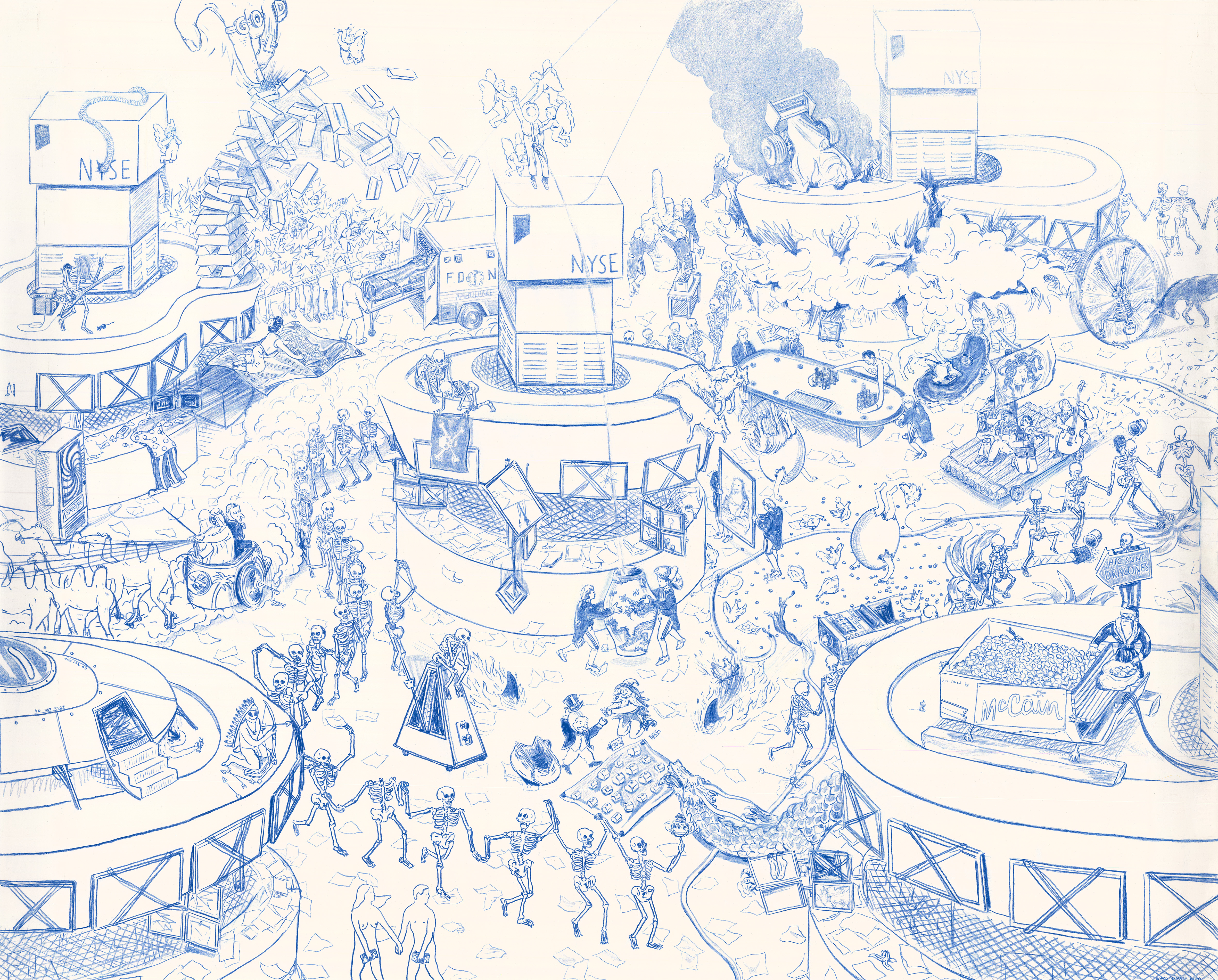
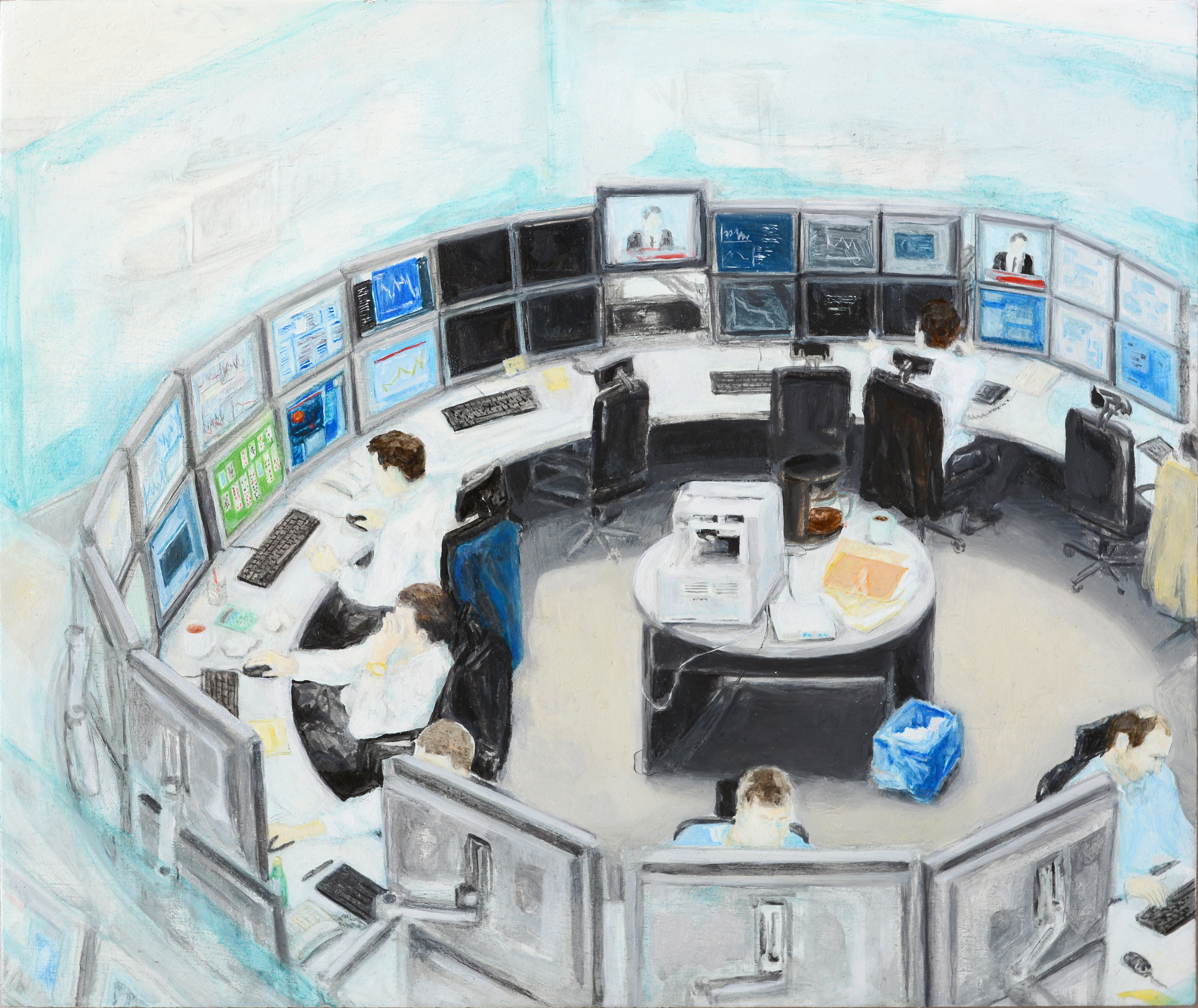
Deploying satire and empathy, passion for both politics and craftsmanship, perfection in classical drawing and a predilection for naive expressiveness – Bianca Argimón’s artistic practice concerns itself with contradictions. Born in Brussels into a family of the European Commission’s operatives, this grand-niece of the 1960s Barcelonian painter Daniel Argimón studied at Saint Martins, Rhode Island School of Design and École des Beaux-Arts de Paris without ever adhering to the mainstream aesthetic moment– digital videos, Arte Povera-esque installations and performances denouncing global warming – opting instead for weaving, ceramics and drawings as her mediums, encrypting a multi-layered socio-philosophical discourse.
Two of her pencil works ironise on the absurdities of the beauty industry and daily office life. Botox portrays a group of odalisques swimming in a pool – the image of a Persian illuminated manuscript – in the centre of which is a fountain ejecting the paralysing liquid. With their motionless grimaces and empty eyes, these pale creatures invoke the zombies from Mexican folk paintings. On Say Cheese, dozens of corporate employees play children’s games amidst a huge work space, its meeting rooms, computers, bookshelves and coffee machines. Crazy smile emojis – always identical – cover their faces.
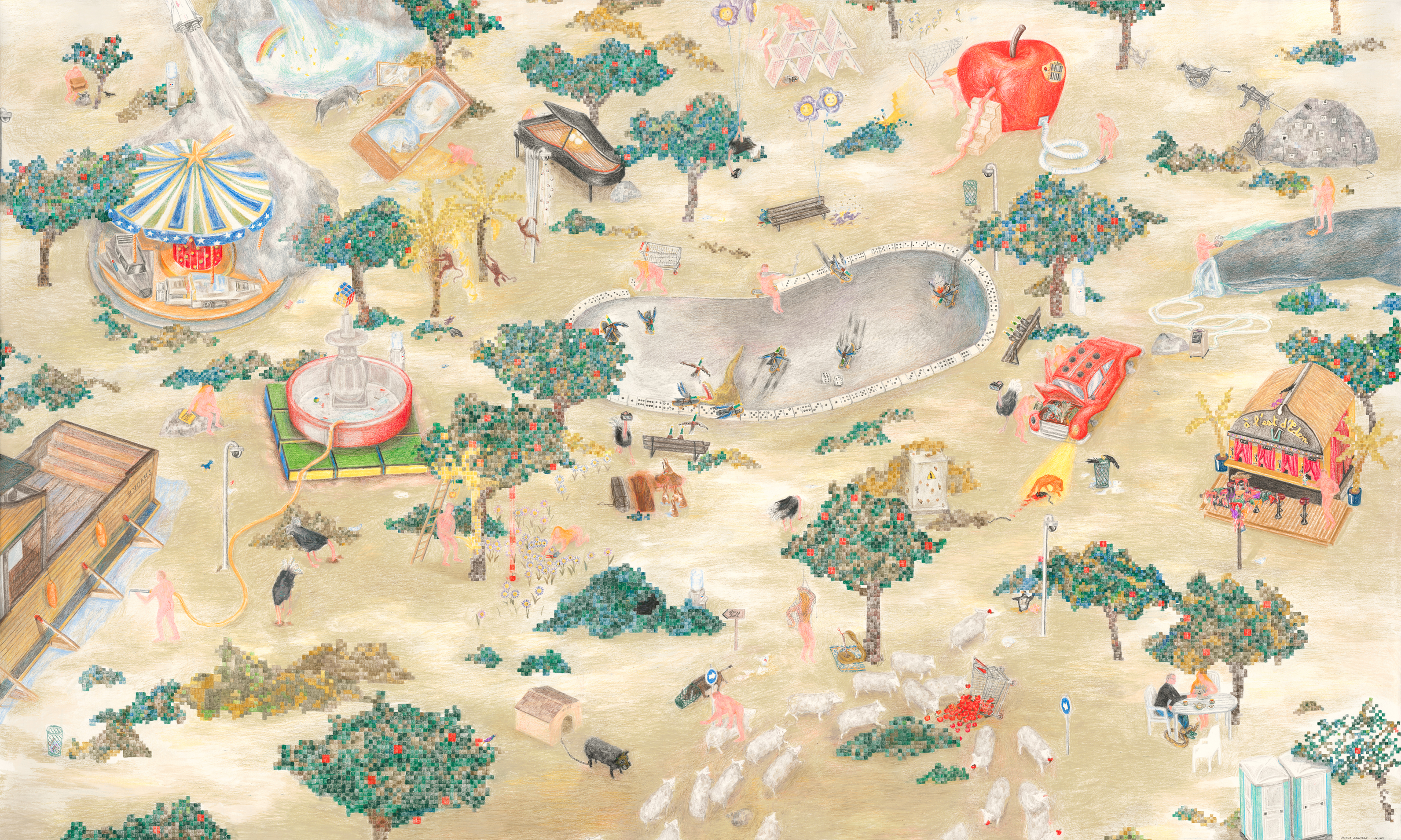
We, as individuals and as a society, are always just one step away from the abyss of chaos and frenzy – such is the idea behind Argimón’s “paradisiac” drawings À l’Ouest d’Eden and Eden Park, inspired by Hieronymus Bosch’s Garden of Earthly Delights. Surrounded by giant hourglasses, dominoes, pianos and cars serving as pots for flowers and vegetables, the inhabitants of her garden, who pay no attention to each other, are embracing their own weirdness to the fullest. Led by humanoids, the 7 dwarves are boarded onto UFOs. A naked woman – perhaps Eve – trains her muscles. A man urinates on a tree. A T-rex draws money from a cash machine. Robotic dogs play in front of their master – himself, a robot, too.
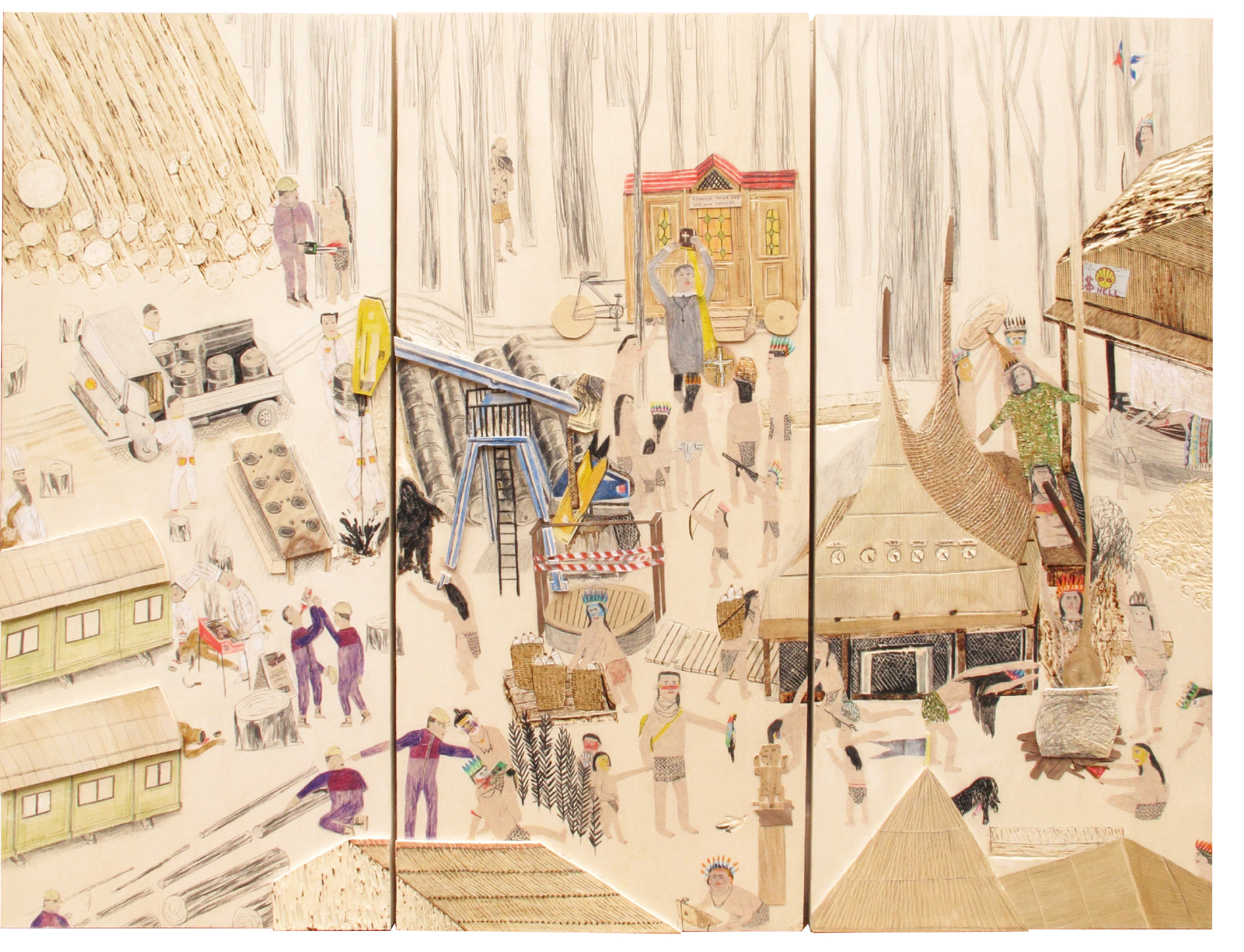
Foreign to the ideological and deterministic view of world history, Argimón tries to envision even the most problematic events of the past, such as the colonisation of South America, as non-linear and ambivalent. On Hole in the Wall, in an echo of the famous Bayeux Tapestry, there’s no clear distinction between victims and perpetrators, but rather a multitude of enigmatic, anecdotal and revealing micro-narratives. A group of Native Americans gather around a priest who offers Mass, while others, wearing headdresses, shoot someone with a bow and an assault rifle. An oil platform is polluting the land, and the Shell logo is ironically subtitled “hell”. A clock with different time zones is ticking above the entrance to a wigwam. Nearby, a Native American walks around wearing a sadomasochistic mask. A totem stands abandoned by its worshippers. Bigfoot, seemingly tired of this bacchanal, is hiding somewhere in the corner.
Argimón’s medieval miniatures, as well as the abundance of fantastic objects and heroes in her drawings create an emotional distance between the artist and the social context in which she lives, and which she, in fact, critiques. Dressed up in historical costume, the excesses of contemporaneity are revealed.
The presentiment of catastrophe and the foreboding intuition that society, as we know it, is unravelling mark the political sensitivity of Bianca Argimón. In 2 seconds to go – a response to Donald Trump’s presidential victory in the United States – rugby players are devoured by snakes that appear from the stadium’s grounds. The building itself is covered by US media and multinationals’ advertising banners. The left balcony falls apart crushing its occupants. On the opposite side, a preacher is praying under the screen which says “In God We Still Trust”. A small black figure levitates over the field. Far from any partisan propaganda, 2 seconds to go is a metaphor for the great perplexity in which North America, struck by multiple crises, finds itself today.
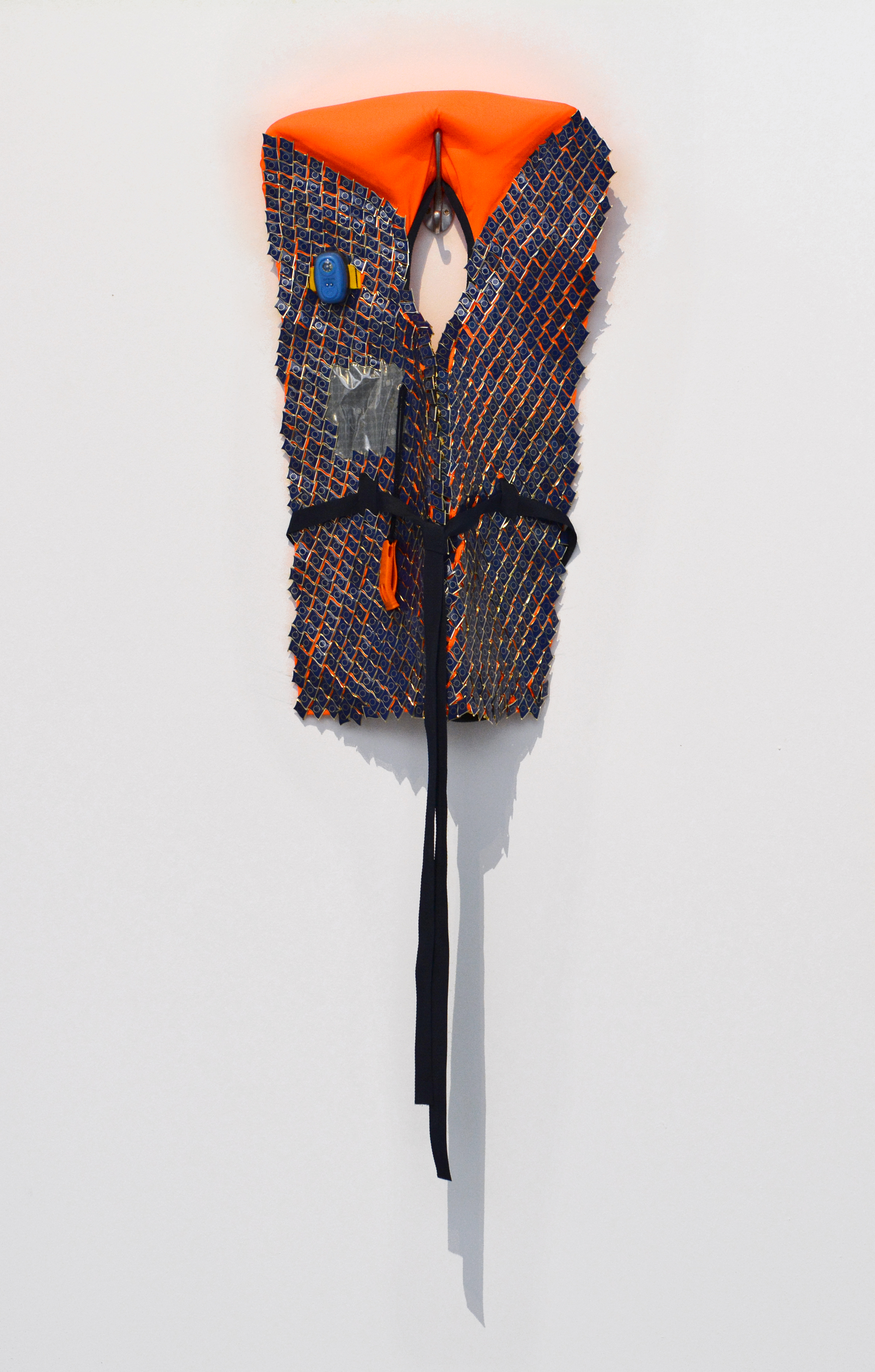
The Old World is of equal interest for Argimón. Imitating the European Union’s flag, she embroiders onto a blue carpet a yellow labyrinth, in the heart of which is emptiness (Welcome). Euroflot, in turn, is a life jacket covered by the EU’s coat of arms, ambiguous in its interpretations. A symbol of relief, which the Union brings to those who need it? Or the Union which sinks itself? But Bianca Argimón’s most eloquent political work is Human Zoo. In an illustration of the amphitheatre in parliament, it parodies the legislative bodies’ solemn group portraits like Cicero Denounces Catiline by Cesare Maccari or Ceremonial Meeting of the State Council by Ilya Repin. Caught in the heat of the debate, MPs, depicted as macaques, are flooded by a deluge, a deathly whirlwind raging onto the chamber’s floor.
Contemplating her small-scale characters from above – the artist, always calm and alienated, seems to oscillate in her attitude toward them; between sarcasm and a melancholic irony. These feelings, notable to Argimón’s work, are condensed in the sculpture of a fist with a half-broken thumb, raised in sign of approval (Good Job). As revealed in the Locust and Figure 8 pencil works, on which the tennis players are ripped off in a dust storm and the riders are thrown out of the saddle by maddened horses, the human genre, according to Argimón, is powerless to the immensity of the unorganised, chaotic Universe and the blindness – think of the Moires in Greek mythology – of the fatum.
Strongly moralistic, Bianca Argimón is allergic to all kinds of eccentricity. In the Materazzi ceramic installation, named after the Italian football player known for his theatrical escapades, the athletes are lie on the ground in poses of suffering, and it remains uncertain if their traumas are real or fake. Although, how delicately Argimón sculpts the figures hints at her unmistakable empathy for them – a silent and sober empathy, an empathy flavoured with good humour and hereby even more firm and profound. The broken boats left on the seashore in the Draps Noués drawing are equally executed with absolute care and precision.
Taken in their entirety, some of the most characteristic traits of Argimón’s œuvre – light colours, bucolic imagery, childish pictorial manner and absence of explicit or graphic scenes – give them the second layer of meaning. Behind the subtle allusions to art history, reflection on the future of Western society and caustic satire, Bianca Argimón conceals her warmth and compassion for all that is defenceless, fragile and betrayed. The sentiment is as rare these days as the number of talents she possesses.
Bianca Argimón’s “Par Anomie” solo show at the Mansart Gallery (5 rue Payenne, 75003 Paris, France) is open from May 17 to June 16.
